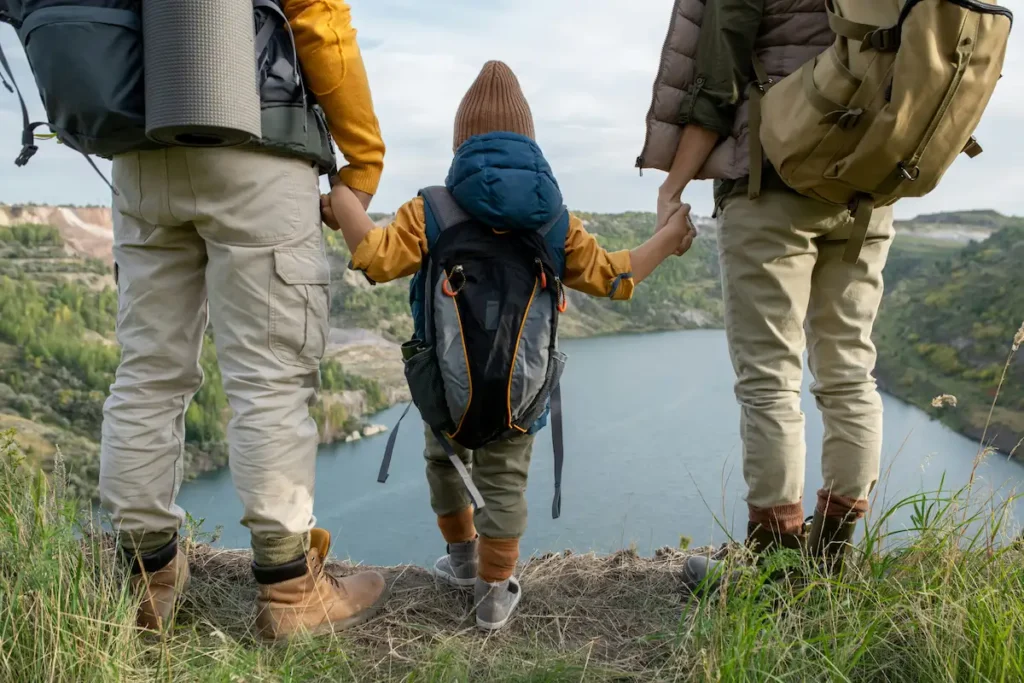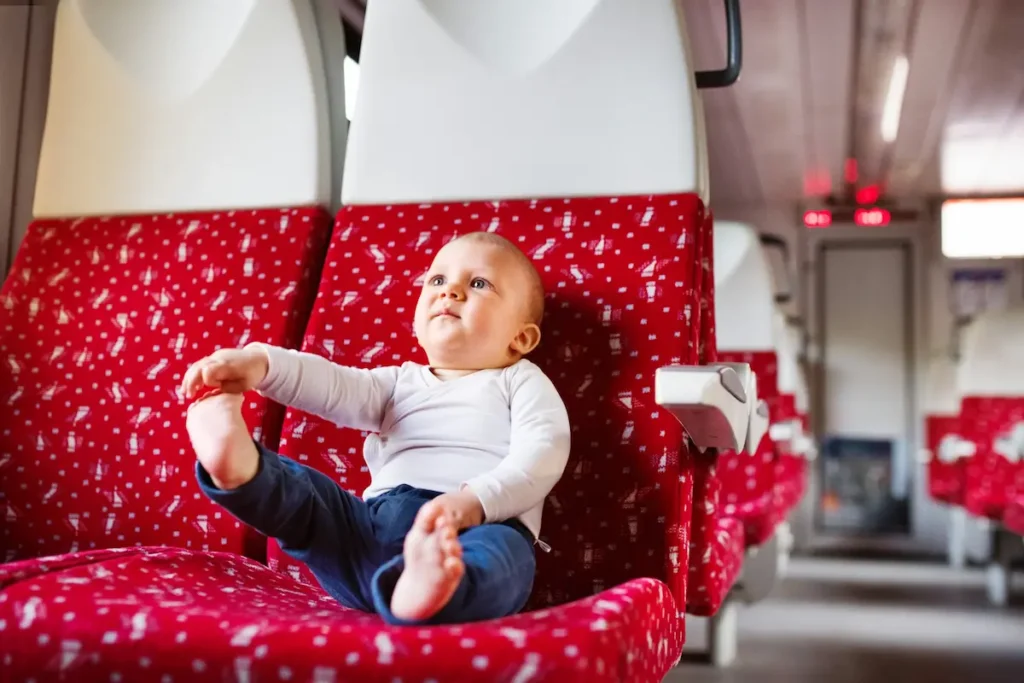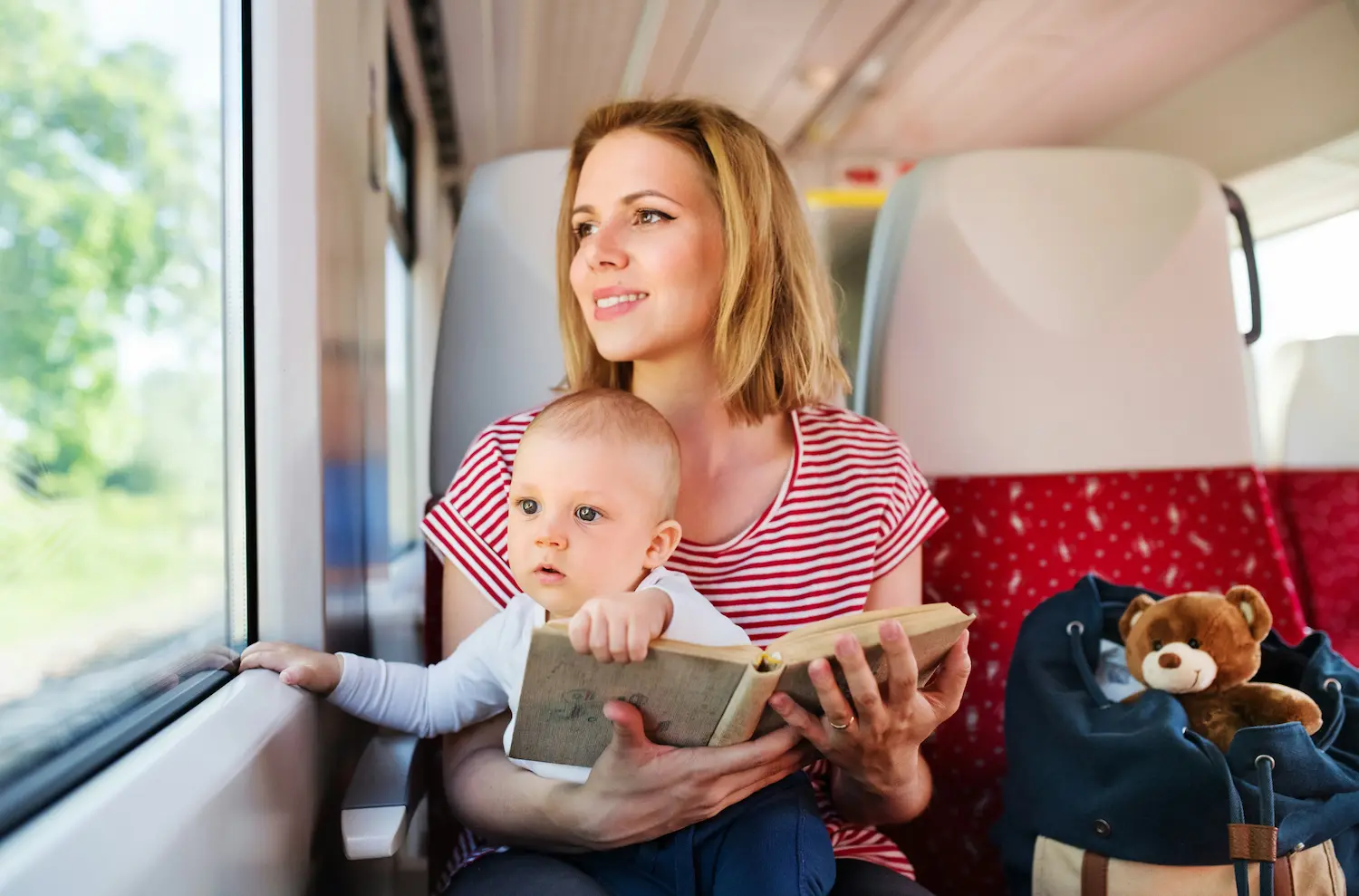Sustainable family travel: Tips and Tricks
Photo Credit: Getty Images
“When my eldest son was born, I realized that I couldn’t promise him a better future without questioning my way of life. Like Charlène, many parents become aware of the need to rethink their lifestyle, and feel the need to travel differently. But while the objective is clear, there are many questions to be answered when it comes to “sustainable” family travel.
“All of a sudden, the future becomes very concrete, very tangible. He has a pretty face, grows a centimetre every month, goes from crawling to walking in a matter of weeks, and learns words at lightning speed”.
The prospect of our children’s future makes the environmental challenges that await them tangible. Then you realize there’s a lot you can do. Both to reduce our environmental impact, and above all to teach our children a different way of living, one that is more respectful and sustainable.
And what about vacations? They can be integrated into a global approach to minimize our impact. To do this, we open the field to all possible adventures: from small escapades to the most ambitious journeys. You become a child again, and the journey takes on a whole new meaning.
So you’d like to travel sustainably as a family, without taking a plane or a car, and with a focus on sustainable providers on the way ? Challenge accepted! Discover our tips to help you.
Sustainable family travel: age-specific needs to be taken into account
Before planning your trip, we recommend that you list the specific needs of each family member. Incidentally, this advice also applies to travel without children ! For our little ones, it’s their age that will influence your choices.

Photo Credit: Getty Images
– Infants: Under 3 years
- Transport: The flexibility of the baby carrier
Spoiler: they don’t work… so stroller or baby carrier? This stroller is ideal for city tours with lots of walking. But the baby carrier is a better idea for public transport when it’s busy or not accessible to strollers. The baby carrier is also ideal for hiking in the great outdoors, so you don’t have to carry a load. Museums and cultural sites also provide strollers for parents who have opted for a baby carrier (e.g. the Château de Suscinio near Vannes in Brittany).
- Pace: Adapting, even if it means slowing down
It’s often said that it’s easier to travel with a 3-month-old baby than with a 9-month-old… It’s true: newborns sleep in just about any situation. So whether you’re on the train or out hiking, as long as it’s with you, it doesn’t matter! With a baby who is beginning to be more alert, and also more sensitive to noise when sleeping, think about setting aside times when he/she can explore and sleep in a quiet place. Finally, one point not to be overlooked is the fact that parents are also tired from sleepless nights. So let’s ” slow down ” and enjoy every step of the way 🙂
- Luggage: Avoid the superfluous
Diapers, bottles, baby food, clothes, comforters, toys… We all know that your little one’s suitcase is almost as big as ours… Here are a few tips to help you avoid overloading yourself:
- Choose accommodation with washing machine (and dryer, or enough time for it to dry…).
- Introducing little ones to “grown-up” food: we often underestimate babies’ ability to eat solid foods, even though as early as 6 months of age, they’re noshing on our plates as soon as they sit on our laps. So don’t hesitate to give them a taste of the local specialities! In some countries (e.g. Germany), it’s quite common to ask for a “half portion” (half the price) for a child.
- We’ve all seen a child who plays much more with the toy’s box than with the toy itself… So to keep the little ones occupied, go straight to the point. A cuddly blanket and a few favorite toys will suffice, while everyday objects and a few “magic” tricks from the parents will do the rest.
- Finally, for diaper changes, even if in some countries the family toilets leave diapers available, it’s better to plan to buy diapers as you go along – there’s no quick fix. A foldable changing mat with everything you need inside, and you’re ready to go!
– Toddlers (1 to 3 years)

Photo Credit: Getty Images
- Walk…in moderation -)
They walk, but not too much! This is the age when children need to run, but strangely have no desire to walk. Now that your child is too heavy to be carried over long distances, the ultra-light “cane” stroller will become your best friend.
- Rhythm: Incorporating naps into the journey
Between the 6 a.m. wake-up call, the nap and the 8 p.m. bedtime, you’re wondering how to plan your train journeys, your visits and a little rest too?
On the question of rhythm, there are 2 schools:
- Betting on children’s adaptability: napping in the stroller, going to bed later and hoping to wake up the next morning…
- Adapt the trip to their usual rhythm: come back to the accommodation for a nap in the middle of the day, “sleep in” by going to bed at the same time as your child…
All that’s left is to test and see which method works best for your child.
- Activities: And….Action !
For luggage, the same advice applies as for infants: avoid taking on unnecessary weight. To keep them busy on the road or at your stopovers, think of mobile games. They are perfectly suited to itinerant and slow-paced travel. We recommend the ” On s’fait la malle!” playmats. A mompreneur who develops nomadic play areas with story bags and story mats: the perfect way to stimulate your children’s imagination on the move. Made in France with local designers and producers from the Lyon region – we approve!
For your visits, at this age, they don’t yet know history, or even characters like “the Romans”, “the Knights”… They can begin to discover them, but won’t be as involved in games on these subjects as their elders who are already in elementary school. Focus on more “everyday” things: nature, sensory discoveries or contemporary/abstract art. You’ll also need to set aside some “free” time for them to play freely.
– Little ones (ages 4 to 8)
- Walk: full speed ahead!
As children get older, their ability to walk long distances depends on their personality and habits. Having a goal, as in a treasure hunt, also changes a lot of things: think geo-caching.
- Rhythm: more flexibility
Naps tend to disappear around age 4. If you are in School No. 2 (see “Toddlers” insert), your days are once again free to be organized in a more flexible way.

Photo Credit: Caroline Hernandez
- Activities: Discovering, stimulating curiosity
Some kids are starting to get to know characters like “the Romans”, “the Knights”… Age-appropriate treasure hunts can be a great way to discover cultural sites. Many sites offer support for children at reception. Don’t forget to ask about, or even check out, child-friendly tours. This is becoming increasingly common (cf. some castles in the Loire Valley, for example). It’s also the age when you can start taking part in discovery sports: kayaking, biking, accrobranche…
– Big kids (ages 9 and up)
From this age onwards, your children will have a rhythm very close to that of adults. It all depends on their personality and habits! You may also need to negotiate a little more 😊
Family trips: Tips for different modes of transport
Reducing the impact of your travels means asking yourself what kind of transport you should use….we’re putting aside the plane and the car, but what does it look like with the kids?
The train: what if it were the ideal eco-friendly mode of transport….with children?
It’s the big winner in the battle against the car. It includes many advantages for traveling with children:
- freedom of movement: no seat belts or car seats, you can read a story with a cuddle and wander the corridors to meet other passengers
- unlimited (or almost unlimited) access to toilets with no need to stop
- meeting the other children on the train, the hardest part will be saying goodbye
- catering available on trains
- playtime and time will fly : some companies, such as Railjet (Austria), carriers in Finland and Switzerland, or Deutsche Bahn (Germany), pamper the little ones with dedicated carriages, or even special entertainment for the little ones! And even without it, you’ll be more available to play and interact with your children without having to manage the driving or the route. It means sharing the journey and experiencing it differently. More memories with your children and less stress 😊
Photo Credit: ÖBB / Harald Eisenberg
Night trains are also an interesting option for sustainable family travel. It allows you to cover long distances to optimize your travel time. Depending on the size of your group, you can reserve a sleeper compartment just for you and your children. Spending the night on a train and waking up in another country or region is an experience in itself, and we bet your kids will love it! It’s so much cooler to share this story to your friends at school than about a road trip.
The bus: in moderation
The bus can be less obvious with a family. It is preferable for short distances / in town, as it offers less freedom and safety for children. Most bus companies do not provide suitable seats and ask parents to take them with them. While an inflatable booster seat can be used for children aged 4-5 and over, it’s hard to imagine carrying around a baby seat for younger children. But in the city, public transport will also enhance your children’s experiences and curiosity.
The ferry: adventure on the agenda
Children’s play areas can be found on almost all mainline ferries (Corsica Ferries, Brittany Ferries…). Many companies also provide teams of entertainers who organize activities to keep the children entertained. We recommend this mode of transport for overnight trips to Sardinia, Sicily or Ireland, for example. Taking a boat or even spending a night at sea will be a memorable experience for your children.
Sustainable family travel: which trip is best?
Your choice is made: the next family vacation will be eco-responsible! But what do we do?
Define the program that’s right for you
Now that you know everyone’s needs, all you have to do is imagine your program! Here, some like to improvise, to let themselves be carried along by chance and get lost, while others prefer to organize their days meticulously. To each his own, with or without children, it’s the same approach.
At Detour Odyssey, we invite you to take your time when traveling, with itineraries where discovery is at the heart of the journey. You’ll feel like you’ve made ten trips in one. It’ll be an endless collection of memories with your children.
We give you all the keys and tools you need to find and experience the trip that’s right for you. No more hours of research before or during your trip. We’ll be at your side to help you travel “sustainably” with your family, simply and serenely.
If we can give you one piece of advice, though: children are generally much more curious than we might think. So don’t hesitate to vary the discoveries along the program: nature, culture, a bit of walking, a bit of rest…
Nurturing encounters and discoveries
Your children are extremely lucky: you’re taking them with you to discover the world! You take them out of their daily lives to discover other ways of life, other landscapes, other languages. It’s a richness they “store up” in the construction of their personality. All these othernesses forge their open-mindedness and tolerance.
The encounters you’ll make along the way will leave their mark on their childhood, and yours too! In many countries, children have an advantage in terms of sympathy: locals are more likely to come to them for a kind word, an attention, sometimes even a gift. They’re like our “passport” to kindness. And even in countries where people are more reserved, it’s our children who are generally less shy. They go to see the kids in the tent/room/place next door, they don’t speak the same language, but who cares! And after a few minutes, the parents talk too. Whether it’s a few words exchanged or new friendships made, they’re all good memories.
Where to go for sustainable family travel?
The question that may seem the least obvious to you, will be to identify the region to discover with your children. And to find it, several criteria come into play, to target a trip that will be more suited to your family trip.
Among the elements to consider, we can advise you to think :
- the type of accommodation for families (family or connecting rooms)
- infrastructure equipment (high chairs, changing tables, steps, cots, etc.)
- the facilities on site (e.g. children’s tour of museums, special events during visits).

Photo Credit: Krzysztof Hepner
Some countries may also be a little more culturally sensitive to families. Northern countries, for example, pay particular attention to children in public places and infrastructures…. But above all, listen to your desires and with the right preparation, you should be able to adapt. Slow, low-carbon travel also means focusing on Europe, and benefiting from infrastructures and travel conditions that make a family trip less epic or headache-inducing than a trip to the other side of the world.
And if you’re planning a low-impact family trip, but don’t necessarily know where to go or how to organize it, we’re here to help. Based on your criteria, we’ll recommend the right trip for you and your family. And we’ll simplify all the organization for you, so all you have to do is concentrate on packing!
Don’t hesitate to contact us : we’ll be happy to recommend slow, low-carbon trips to suit you and your family.
So when’s your next sustainable family trip?

